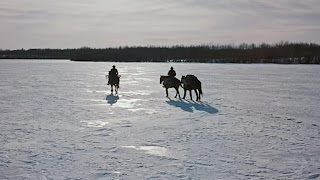Camera Angles and movement
1 . Extreme long shot
1 . Extreme long shot
2. Long Shot
 Shows a broad view of the surroundings around the character and coveys scale, distance, and geographic location.
Shows a broad view of the surroundings around the character and coveys scale, distance, and geographic location.3. Medium Shot
 Shows a character's upper-body, arms, and head.
Shows a character's upper-body, arms, and head.4. Close-up shot
 Shows a character's face and shoulders. It is close enough to show subtle facial expressions clearly.
Shows a character's face and shoulders. It is close enough to show subtle facial expressions clearly.5. Extreme close-up shot
 Shows only a part of a character's face. It fills the screen with the details of a subject.
Shows only a part of a character's face. It fills the screen with the details of a subject.7. Medium wide shot
 Shows a character usually cut off across the legs above or below the knees. It is wide enough to show the physical setting in which the action is taking place, yet it is close enough to show facial expression.
Shows a character usually cut off across the legs above or below the knees. It is wide enough to show the physical setting in which the action is taking place, yet it is close enough to show facial expression.8. Wide shot
 Shows an entire character from head to toe.
Shows an entire character from head to toe.When cutting from a shot to another shot of a different shot size, (for example cutting from a long shot to a medium shot,) while framing the same subject, the difference in image size must be decisive. If the size of the subject does not change sufficiently, you will get the unpleasant effect of an indecisive cut and the audience will see it as a mistake or a distraction.
The Bird's-Eye view
Scene from directly overhead meant to feel like a ‘god position’ for the audience
Horizontal camera angles
Moving the camera around the subject horizontally while aiming at the subject creates different camera angles below
Vertical camera angles
Moving the camera around the subject vertically while aiming at the subject creates different camera angles below
High angle
The camera is placed above eye level, looking downward. A high angle shot (downshot) can make a character look smaller, younger, weak, confused, or more childlike.
Eye level
Camera is placed at human eye level and usually an observing scene
Low angle
The camera is placed below eye level, looking upward. A low angle shot (upshot) can make a character look bigger, stronger, or nobler. It also gives the impression of height.
High angle

Low angle

Two shot

Over the shoulder shot

Pan
The camera rotates from side to side, so that it aims more to the left or right. The camera does not change the location.
Tilt
The camera rotates to aim upward or downward without changing the location. Tilt is sometimes called "pitch".
Boom
The camera travels up and down.
Zoom
The camera's lens is adjusted to increase or decrease the camera's field of view, magnifying a portion of the scene without moving the camera.
"reverse angle shots".





No comments:
Post a Comment